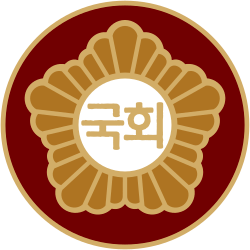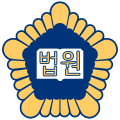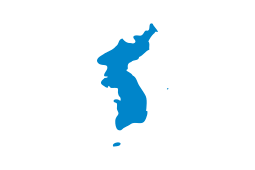Prime Minister of South Korea
| Prime Minister of the Republic of Korea 대한민국 국무총리 | |
|---|---|
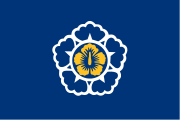 Prime ministerial standard | |
 Prime ministerial emblem | |
| Style |
Prime Minister (총리님) (informal) |
| Member of |
State Council National Security Council |
| Appointer |
President of South Korea (Subject to the National Assembly's approval) |
| Term length | No fixed term |
| Constituting instrument | Constitution of South Korea |
| Inaugural holder | Lee Beom-seok |
| Formation | July 31, 1948 |
| Website |
(in English) pmo.go.kr/ (in Korean) pmo.go.kr/ |
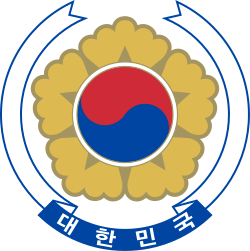 |
|---|
| This article is part of a series on the politics and government of the Republic of Korea |
| Constitution |
|
Judiciary |
| Prime Minister of South Korea | |
| Hangul | 국무총리 |
|---|---|
| Hanja | 國務總理 |
| Revised Romanization | Gungmuchongni |
| McCune–Reischauer | Kungmuch'ongni |
The Prime Minister of the Republic of Korea (국무총리 / 國務總理, Gungmuchongni) is appointed by the President of South Korea, with the National Assembly's approval. The officeholder is not required to be a member of the National Assembly. The Prime Minister is not the head of government but rather serves in a role similar to that of a vice president.
Nomenclature
The Sino-Korean word gungmu (국무/國務) means "state affairs" and chongni (총리/總理) means "prime minister", "premier" or "chancellor", so the full title in Korean means literally "Prime Minister for State Affairs", but it is not used as official English title. The short title in Korean is just Chongni.
History
The position was created on 31 July 1948, two weeks before the government of South Korea was founded, and was held by Lee Beom-seok until 1950. The title was Chief Cabinet Minister from 1961 until 1963.
On 27 April 2014, Prime Minister Chung Hong-won announced his desire to resign.[1] However, due to unsuccessful nominations, Chung remained in office until February 2015.
On 23 January 2015, President Park Geun-hye named Saenuri's Floor Leader Lee Wan-koo as the new Prime Minister. Lee was confirmed by the National Assembly as Prime Minister on 16 February 2015.[2] However, on April 20 of the same year, he offered his resignation to the President in the midst of a bribery scandal.[3]
Functions
The Prime Minister is the principal executive assistant to the President, who is the actual head of government, not the prime minister.[4] The Prime Minister holds the second position after the President in the State Council of South Korea, which is the cabinet. The Prime Minister assists the President by supervising ministries, make recommendations for ministers, and is the Vice-Chairman of the Cabinet. The Prime Minister is the first in the order of succession to discharge the duties of the office of the President as the Acting President should the president be unable to discharge her or his office. The most recent person to have served as Acting President was Hwang Kyo-ahn, during the impeachment of Park Geun-hye in 2016.
A Prime Minister that has been appointed by the President but not yet confirmed by the National Assembly is known as the acting Prime Minister. The term may also be applied to a Prime Minister that has resigned but in the interim remains in office in a caretaker role. The Prime Minister becomes acting president if the President dies, resigns, or is impeached.
The Prime Minister's Office is supported by two deputy prime ministers.[5]
Lists of Prime Ministers of South Korea
See also
References
- ↑ "S. Korean PM resigns over government response to ferry disaster" AsiaOne. Retrieved 29 September 2016.
- ↑ "Parliament endorses PM nominee" Yonhap News Agency. Retrieved 29 September 2016.
- ↑ The Associated Press (21 April 2015). "S. Korean PM to resign after 2 months amid bribe scandal". The Yomiuri Shimbun.
- ↑ "Government > Executive Branch" Office for Government Policy Coordination Prime Minister's Secretariat.
- ↑ "Government > Organization Chart" Office for Government Policy Coordination Prime Minister's Secretariat.
External links
- Office for Government Policy Coordination, Prime Minister's Secretariat
- South Korea at worldstatesmen.org
_(cropped).jpg)

